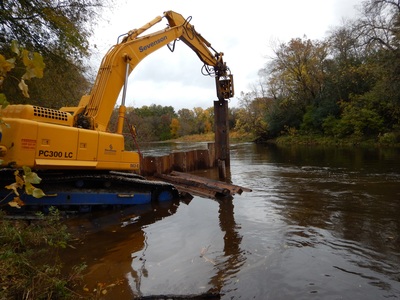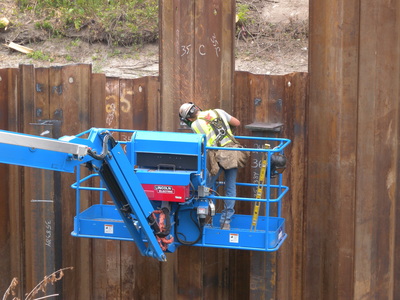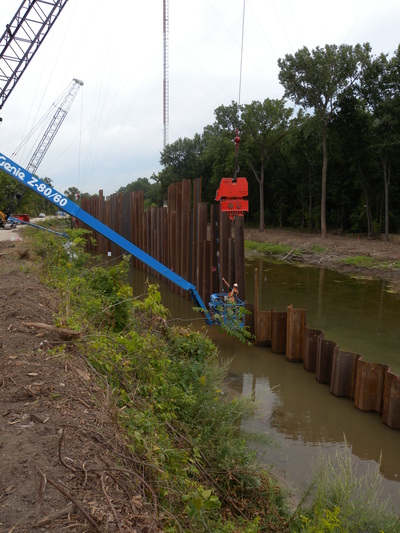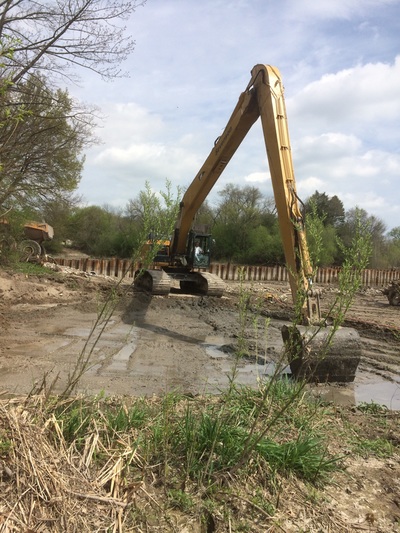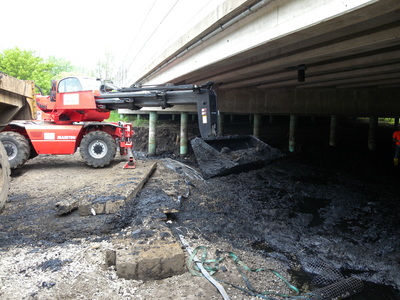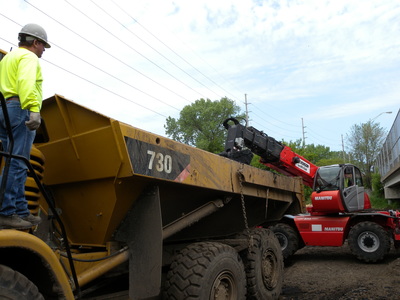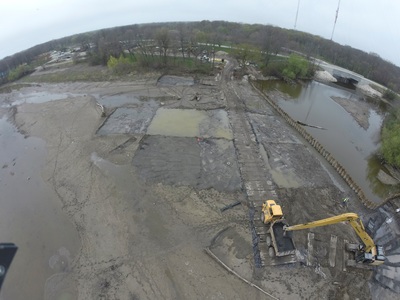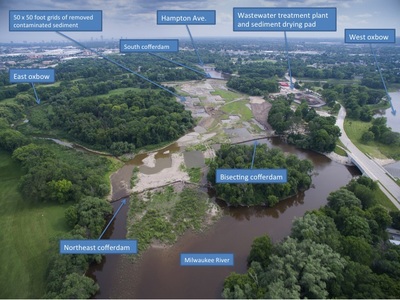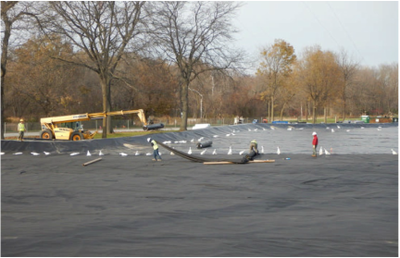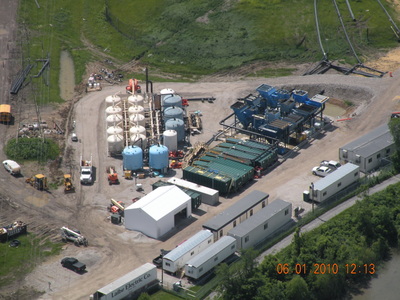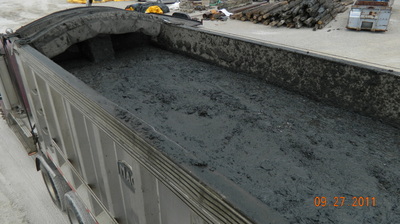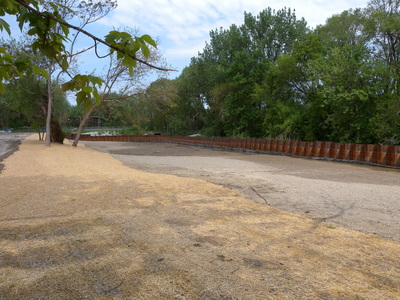Dry excavation is another method to remediate contaminated sediment. Before the sediment is removed, water is first diverted or drained from a section of river, lake, or wetland. Sheet piling or cofferdams are commonly used to contain the area and temporarily reroute the water's flow. Surface water can then be pumped from the area and ground water flow can be controlled. In some areas, such as wetlands, it is possible to excavate "in the dry" without redirecting water. Waterbodies can also naturally be drier during winter months.
When choosing which cleanup method is appropriate, a project team must weigh the pros and cons of each method. Dewatering an area before excavation increases visibility of the sediment to be removed and negates the need for controlling sediment flow downstream. However, additional steps are needed to divert water flow and pump out water, which costs time and money. For this reason, dry excavation is often seen with smaller, confined project areas. Project managers also consider the physical environment, hydrology, and possible short-term impacts when choosing the best course of action. Design is tailored to best fit each site individually.
The extent to which the sediment is dried out before excavation depends on the site. Some project areas will look dry like soil, while some areas might be under a small amount of water. Regardless, almost all projects will include additional time for drying sediment on a dewatering pad with the help of a solidification agent before being trucked offsite. Wet sediment is heavy! A dewatering pad makes disposal easier, cheaper and more secure. Drained water is contained and then treated onsite or sent to a wastewater treatment plant offsite before it is released back into the waterbody. Dry sediment can then be trucked to a certified disposal facility for safe, long-term containment.
A section of river in Milwaukee is drained to prepare for the dry excavation of sediment along the riverbed.
